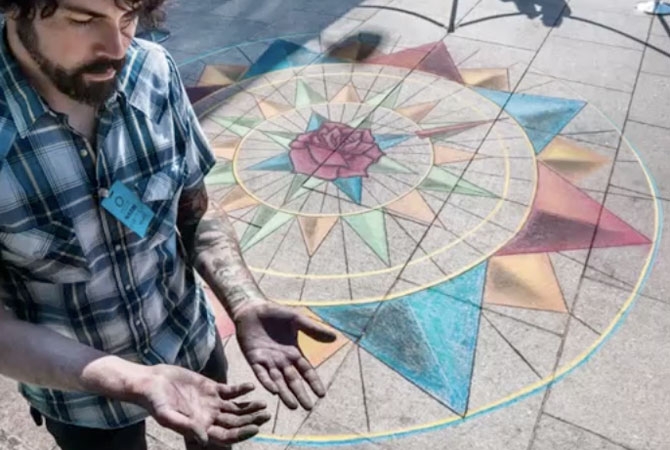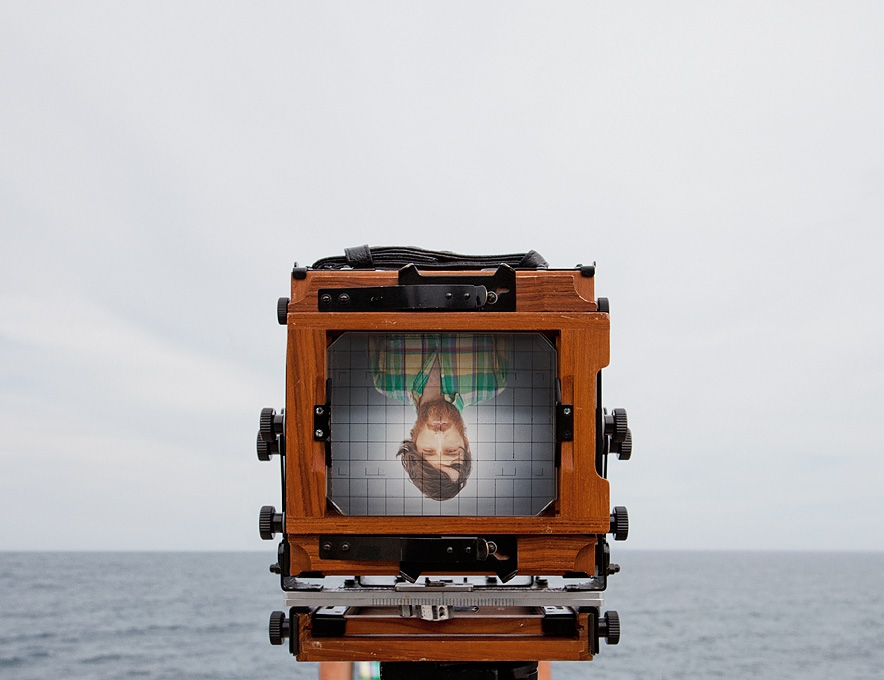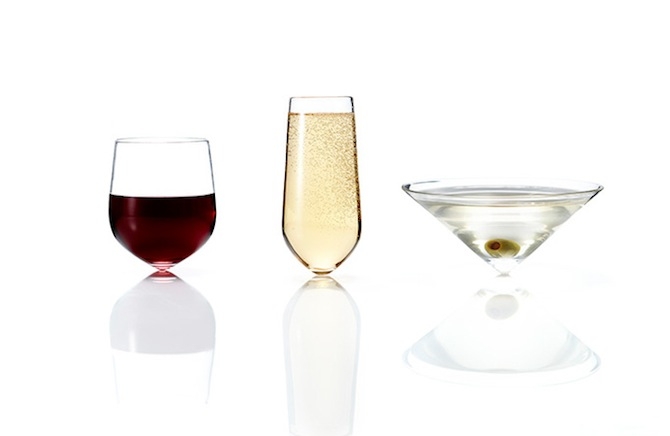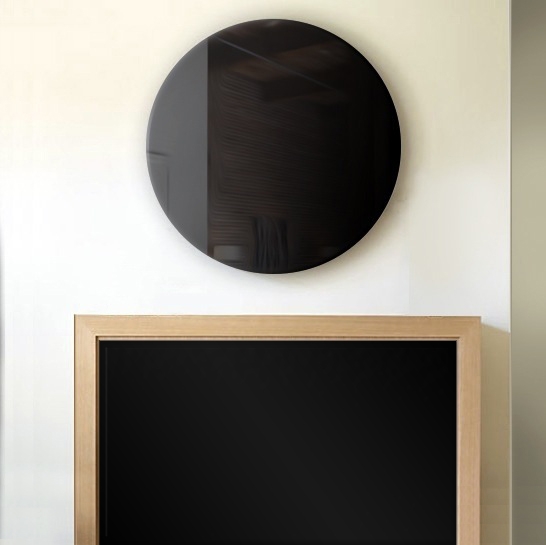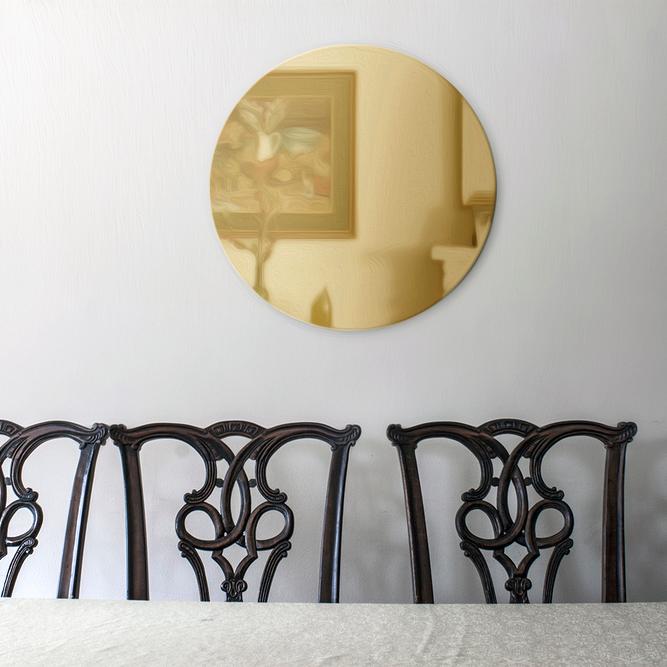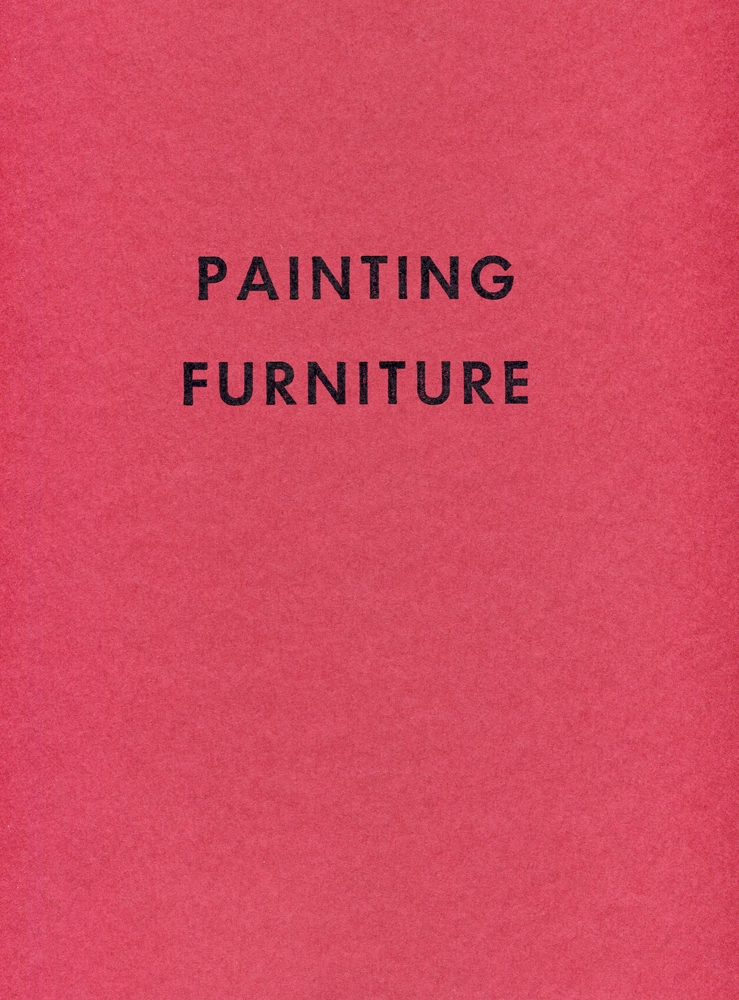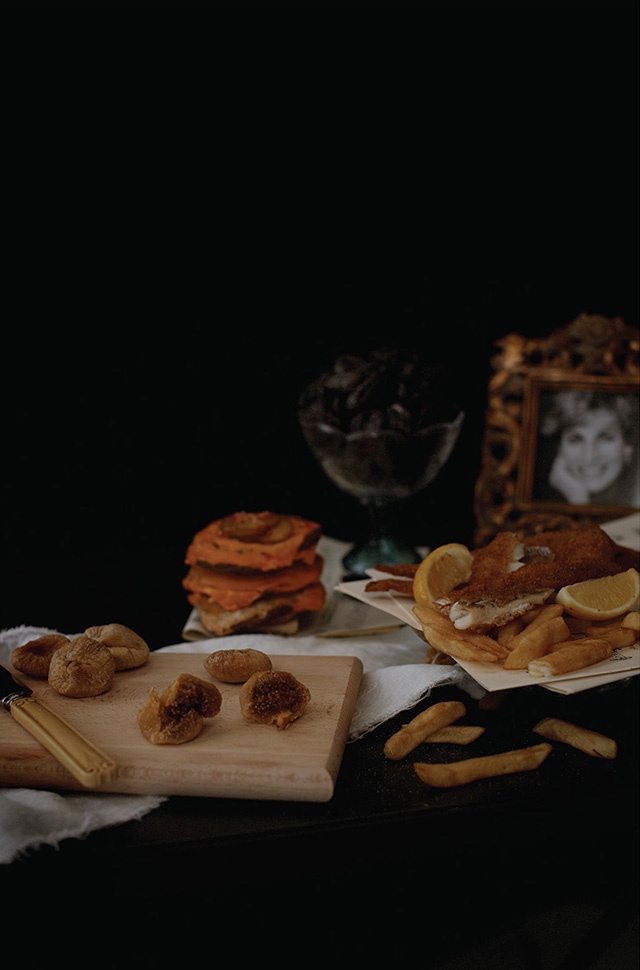
The backstage food requests of musicians range from the practical: liquor, cough drops, and tea for Frank Sinatra, to the strange: Nine Inch Nails' two boxes of corn starch. Photographer Henry Hargreaves became fascinated with these demands, and after perusing countless concert riders in The Smoking Gun's database, he photographed the most compelling requests with a bleak Flemish baroque aesthetic. The connection between the baroque and the musicians is intentional, he tells Vice:
"I felt that there was a direct connection between the themes in these types of paintings and the riders: the idea of time passing and the ultimate mortality of a musician’s career as the limelight inevitably fades—they only have a short time in which they are able to make these demands and have them fulfilled."
If the latest issue of Forbes feels a little heavier on the newsstand this week, that's because there's an actual Wi-Fi hotspot inside. A new print campaign for Microsoft's cloud-based Office 365 service is giving selected Forbes readers 15 days of free T-Mobile Internet access with a wireless router small enough to fit in a cardboard insert. The tiny hotspot's battery will last for about three hours, but there's an included micro-USB port to recharge the ad. Judging by the photos and videos online, it looks like most readers' response was to immediately rip the ad apart.
This isn't the first time a print ad tried to cross over into the digital world. Last October the CW Network managed to embed an actual smartphone in an issue of Entertainment Weekly to display tweets promoting their fall schedule. [via DesignTaxi/Slick Deals]

Recently, chalk artist Patrick Owens busted out a lovely rose compass pattern (which reminds us of Leonardo Da Vinci for some reason) on the sidewalk outside the Smithsonian in Washington, D.C. Ferit özergül shot Owens at work for a nifty time-lapse video.
The hazy landscapes in Sam Burns' photography aren't a product of digital editing. Instead, he uses his large format camera to expose his photos for up to eight hours. The extended exposure time means that haziness is actually caused by the movement of the water or trees within a major chunk of the day. His landscapes are great, but we think his most impressive photograph has to be his self-portrait, which required the meditative endurance to stand still for about three hours.
His peaceful photos are available as museum quality prints on his website for $70 AUD. 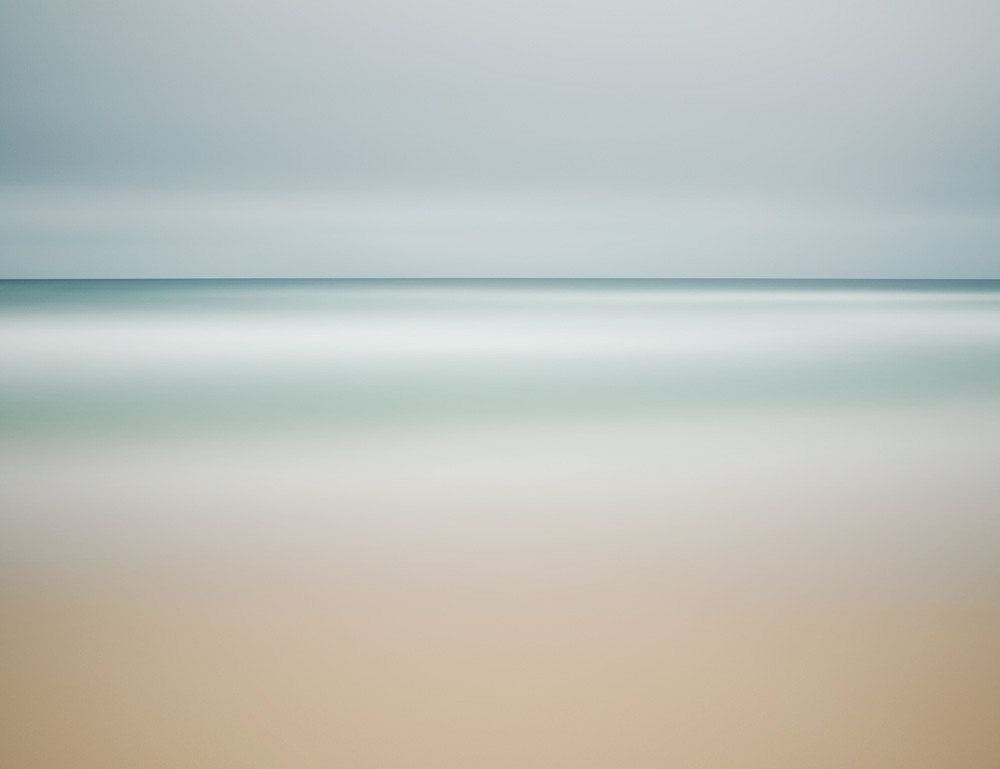
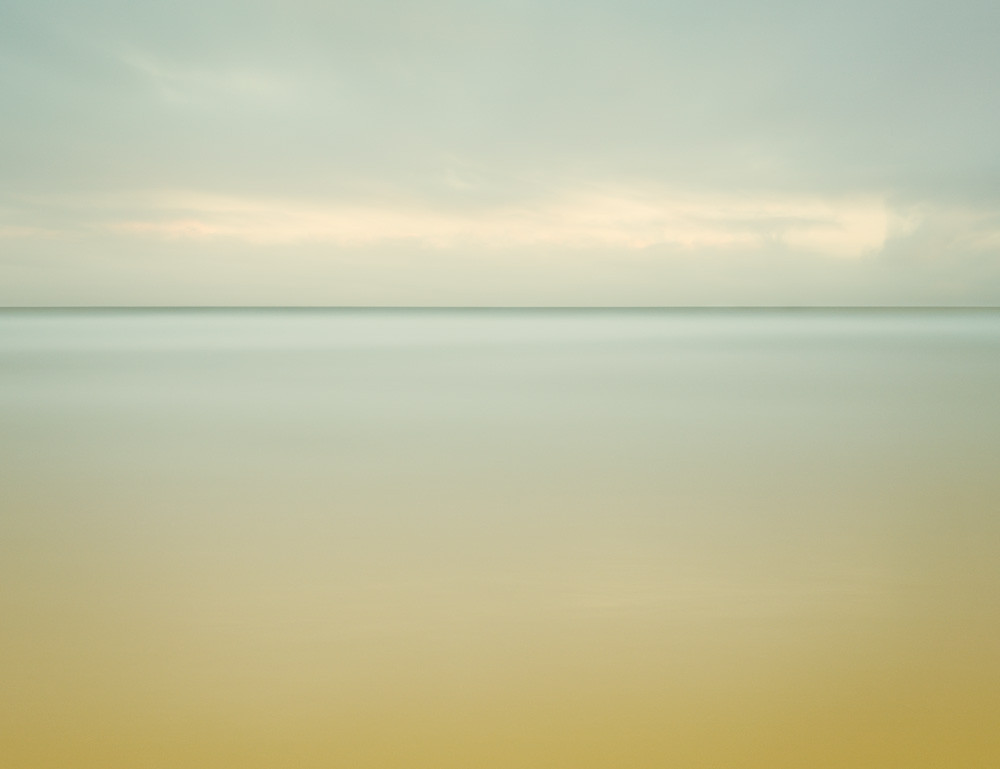
Kate Gibb is known in some circles for her stellar work on Chemical Brothers record sleeves. She's a self-taught printmaker that still works in silkscreen out of her Paddington studio. She recently relaunched her website with an expanded online shop offering limited-edition, signed prints at a reasonable price.
You can also nab a Kate Gibb Collage T-shirt in the Nothing Major online shop.
Visit the new Kate Gibb site online.
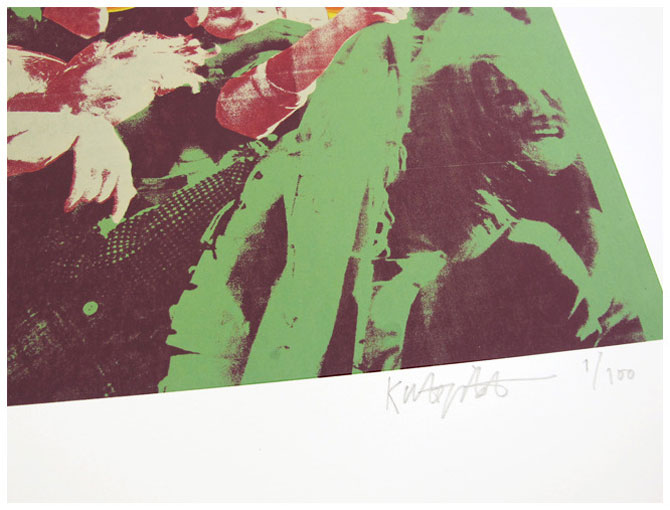

Photos courtesy of The Metropolitan Museum of Art/BFAnyc.com
A new Costume Institute exhibition at New York's Met (lasting 100 days—like the first burst of UK punk—from May 9–August 14, 2013) examines early punk's impact on high fashion. And the irony of highbrow taking note of the influence from below has already made the show fertile ground for derision of the fashion biz and bigtime art museums.
It's also been stirring up a passionate conversation online and in the press on what punk was/is all about. Despite attempts to co-opt it and tame it, to own it or define it, here's evidence that punk still provokes, which was originally a big part of the point, anyway.
For critics of the show, it's easy to make the observation that punk music and culture wasn't about taking over the runway and selling brand-name perfume. But a largely homegrown culture having a significant impact on a commercial one isn't really strange.
There are many aspects of punk, too, that make it a perfect fit for high-end fashion art museums, and the mainstream art consumer. Interest in punk as cultural history has grown from being a critical concern for music heads to a regular literary event with memoirs from people like Patti Smith and Richard Hell. And taking cultural explosions from below seriously is much easier after three-plus decades have passed. Punk music, difficult to find in chain retail shops of the '80s, is but a click away now, so curiosity about it for those that missed it during the vinyl era is bubbling over. Punk, from '77 on, had a design and fashion aspect to it, not to mention a "hype" aspect. Its UK look was formalized in a fetish shop by shady impresario Malcolm McLaren, while its DIY ethic produced powerful graphics in flyer design and an individualized fashion within its own ever-shifting code of outsiderness.
Unfortunately, this leaves us with punk icons in punk iconic clothes that we've all seen before juxtaposed against designer duds that only seem vaguely punk. Odd then, that this show promises more to fashion fanatics—who perhaps haven't seen the way designers deliberately borrow from the Blank Generation look every few years—than it does to music fans. Somewhat logically, the show concentrates on New York and London where the fashion world and punk scenes were in close proximity, but neglects any other spots where punk made early inroads. The show is organized, rather literally, by fashion techniques: DIY Hardware, DIY Bricolage, DIY Graffiti and Agitprop, DIY Destroy. If one has seen those videos of the Clash spray-painting stencils on their clothes, you've seen fashion history in action, evidently.
For a good read on punk in the context of the exhibit, see New York magazine's recent cover story which offhandly makes the case that, in terms of fashion, punk won and elitism lost.

Karl Lagerfeld for House of Chanel. Vogue, March 2011. Courtesy of The Metropolitan Museum of Art, Photograph by David Sims
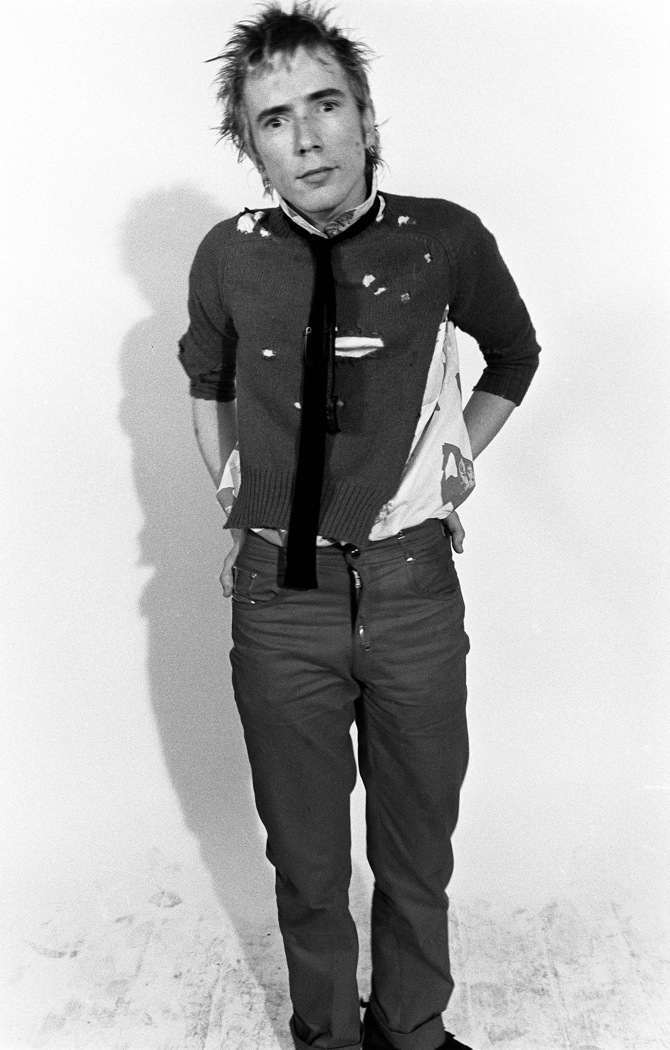 John Lydon, 1976/ Courtesy of The Metropolitan Museum of Art, Photograph by Richard Young.
John Lydon, 1976/ Courtesy of The Metropolitan Museum of Art, Photograph by Richard Young.  Rei Kawakubo for Comme des Garçons, 1982. Courtesy of The Metropolitan Museum of Art, Photograph by Peter Lindbergh.
Rei Kawakubo for Comme des Garçons, 1982. Courtesy of The Metropolitan Museum of Art, Photograph by Peter Lindbergh.
 Jordan, 1977. Courtesy of The Metropolitan Museum of Art, Photograph from Rex USA.
Jordan, 1977. Courtesy of The Metropolitan Museum of Art, Photograph from Rex USA.

Rodarte, Vogue, July 2008. Courtesy of The Metropolitan Museum of Art, Photograph by David Sims.
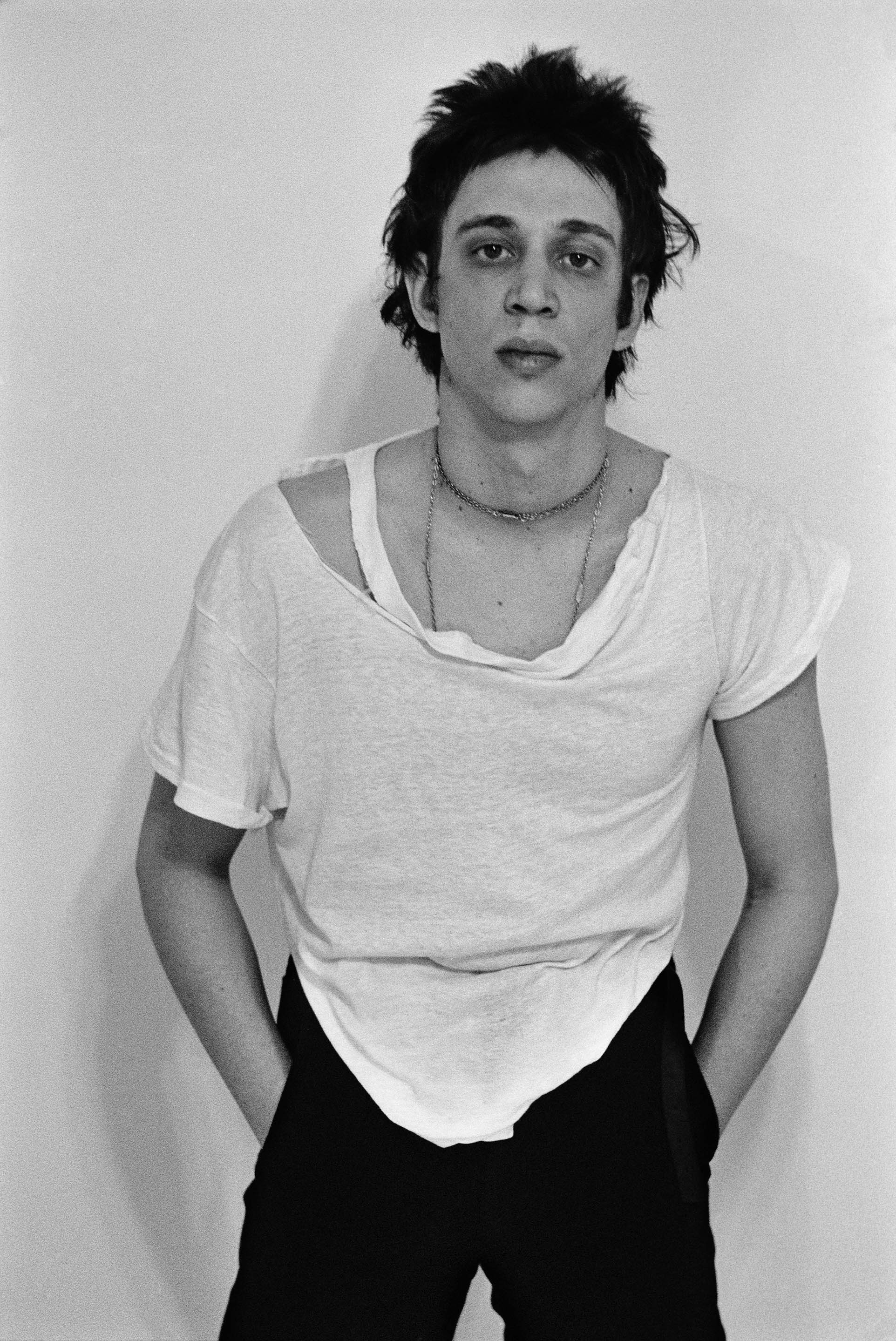 Richard Hell, late 1970s, Courtesy of The Metropolitan Museum of Art, Photograph by Kate Simon.
Richard Hell, late 1970s, Courtesy of The Metropolitan Museum of Art, Photograph by Kate Simon.

Hussein Chalayan 2003, Courtesy of The Metropolitan Museum of Art. Dazed and Confused, March 2003,Photograph by Eric Nehr.
Baccic Glasses look like typical stemware except for one major detail: they’re missing the stem. Designed by Joe Doucet, Baccic glasses bring a classy approach to drinking games. Unable to stand on their own, the glasses feature a round bottom which forces party attendees to finish the entire drink before they can set the glass down without spilling. This clever design is sure to result in a night that is as interesting as the glasses themselves.
The fleece sweater that kept you warm a few seasons ago can actually protect your new iPad from cracking after a drop. The team at ReFleece recycles used fleece garments and plastic bottles to create hard protective cases that maintain the original coloring of the garment. The owners, Jennifer Feller and Sam Palmer, first met while working together at Patagonia store, where they noticed a habit of stockpiling worn fleece. After a few trials they developed a hot pressing system to shape the fleece and make it sturdy enough to protect a fragile device.
When the Michigan-based designers at Color + Mirror created their flagship line of mirrors, they drew inspiration from the vintage dark glass mirrors popular in the 1920s. For their Spring 2013 collection, they replaced the elaborate frames and etchings of those original pieces with a minimalist circular design, and cut their version in three colors: gold, emerald, and black. With the right color and placement, the results can be fairly dramatic. The mirrors are designed and manufactured in their factory just outside of Detroit.
In rural Pennsylvania, in a barn he built himself, Nicholas Gottlund runs eponymous publishing house Gottlund Verlag. He mainly publishes photography books with a special focus on found images and photos from the recent past. Last year he published a four-part series of short books from photographer Ed Panar called Salad Days, consisting of only photos the photographer took while still in high school. To complete the academic theme, each volume was released with the four quarters of a typical school year. For most publications, Gottlund also designs and prints a letterpress cover in his print shop, and constructs the books by hand.
To commemorate a new studio in Los Angeles, every title Gottlund publishes in 2013 will be somehow relate to California.
Check out the catalog over at Gottlund Verlag.
Ignacio Perez, POPCORN ORANGE PEEL KNOCKDOWN, 2013

Suzanna Zak & Nicholas Gottlund, The Copier, 2012
Maggie Lee, Our Teen-Age Boys & Girls, 2012
Ed Panar, Salad Days 2, 2012

